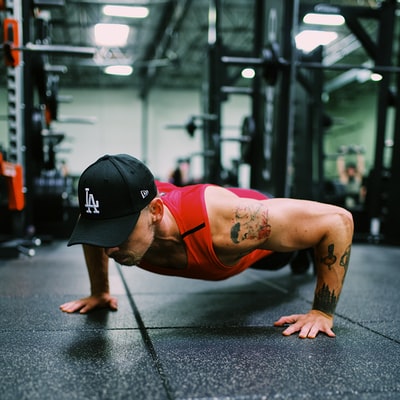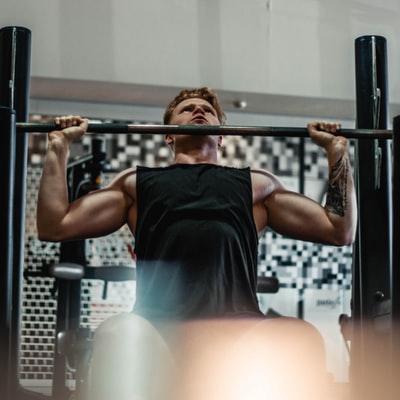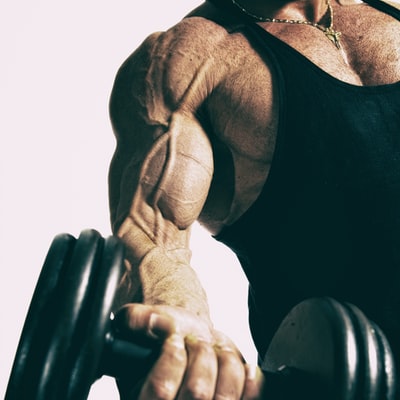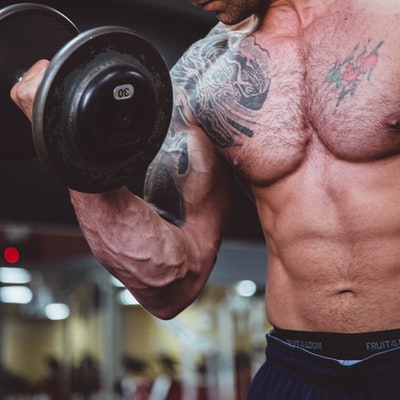



Your triceps play in chest-pressing motions, especially toward the lockout phase, when your arms fully straighten. If your triceps are weak, they may end up fatiguing before your chest and becoming a weak link in your chest training overall, limiting your development. This requires a more aggressive approach to arm work, Greater number of reps of PUSH-UPS and including a reliance on multijoint exercises like weighted dips, machine dips, weighted bench dips.

Benching is a pretty simple motion: Lower the bar to your chest, and push it back up. While that seems pretty straightforward, there's actually a lot you can improve, like the position of your shoulder blades. As you lower a barbell going into the stretch phase of a bench press, consciously retract your shoulder blades to swell out your chest like a big rooster. Observe an experienced powerlifter; he'll have a big stretch, a slight overexaggeration in the thoracic spine, and a chest that puffs out.

The seated chest press machine is an upright version of the standard lying bench press machine. The arms, placed under a weight-bearing load, are pushed away from the chest and returned to starting position. The chest press helps build the pectoral muscles as well as the biceps, deltoids, and latissimus dorsi muscles. This exercise targets the main muscle of the chest, the pectorals. Developing the pecs is an aesthetic goal for many people. It is also functional in developing strength and power for sports where you swing a bat, racket, or club.

Crunches help you build muscle. But unlike situps, they work only the abdominal muscles. This intense muscle isolation makes them a popular exercise for people trying to get six-pack abs. This also makes them ideal for strengthening your core, which includes your lower back muscles and obliques. Doing so can improve your balance and posture. A study commissioned by the American Council on Exercise named this the best abs exercise because it provides the greatest stimulus to both abs and obliques. That’s more bang for your buck, or more aches for your effort depending on your point of view.

Upping your intake of high-protein foods can help promote weight loss, fight belly fat and support muscle growth on your road to six-pack abs. According to one study, consuming high-protein meals helped increase feelings of fullness and promote appetite control in 27 overweight and obese men. Another study showed that people who increased protein intake by just 15% decreased their calorie intake and saw significant decreases in body weight and body fat.

High-intensity interval training, or HIIT, is a form of exercise that involves alternating between intense bursts of activity and short recovery periods. HIIT keeps your heart rate up and increases fat burning. Adding HIIT into your routine can boost weight loss and make it even easier to get six-pack abs. One study showed that young men who performed HIIT training for 20 minutes three times per week lost an average of 4.4 pounds (2 kg) and saw a 17% decrease in belly fat over a 12-week period.

Stand with your feet shoulder-width apart. Hold dumbbells in either hand at your sides, with your arms fully extended and your palms turned in. Curl the dumbbells to your chest. Do between 6 and 8 reps and 2 sets. Increase to 3 sets after a week or two. After that, you can increase the weight of the dumbbells. If you don't have dumbbells, you can also use kettlebells or barbells.

With this classic bicep exercise, it’s important to keep your back straight and avoid moving your body, except for your arms. You want to make the biceps do all the work, so you may need to start with a lighter weight at first. Stand with your feet about shoulder-width apart. Hold the barbell with your arms at your side, palms facing out. While exhaling, slowly curl the barbell up toward your chest. Keep your chest still, using only your arms to lift the barbell. Hold the position for a second, then slowly lower the barbell to its starting position. Repeat 12 to 15 times.

Sit on a workout chair at a 45-degree incline. Place your feet on the floor and hold the dumbbells at your sides with your arms fully extended. Alternate your hands and curl one dumbbell at a time. Curl until the dumbbell is level with your shoulder and your elbow is totally bent, then slowly lower the dumbbell back to the starting position. Do between 6 and 8 reps and 2 sets. Increase to 3 sets after a week or two, then add more weight as you get stronger.